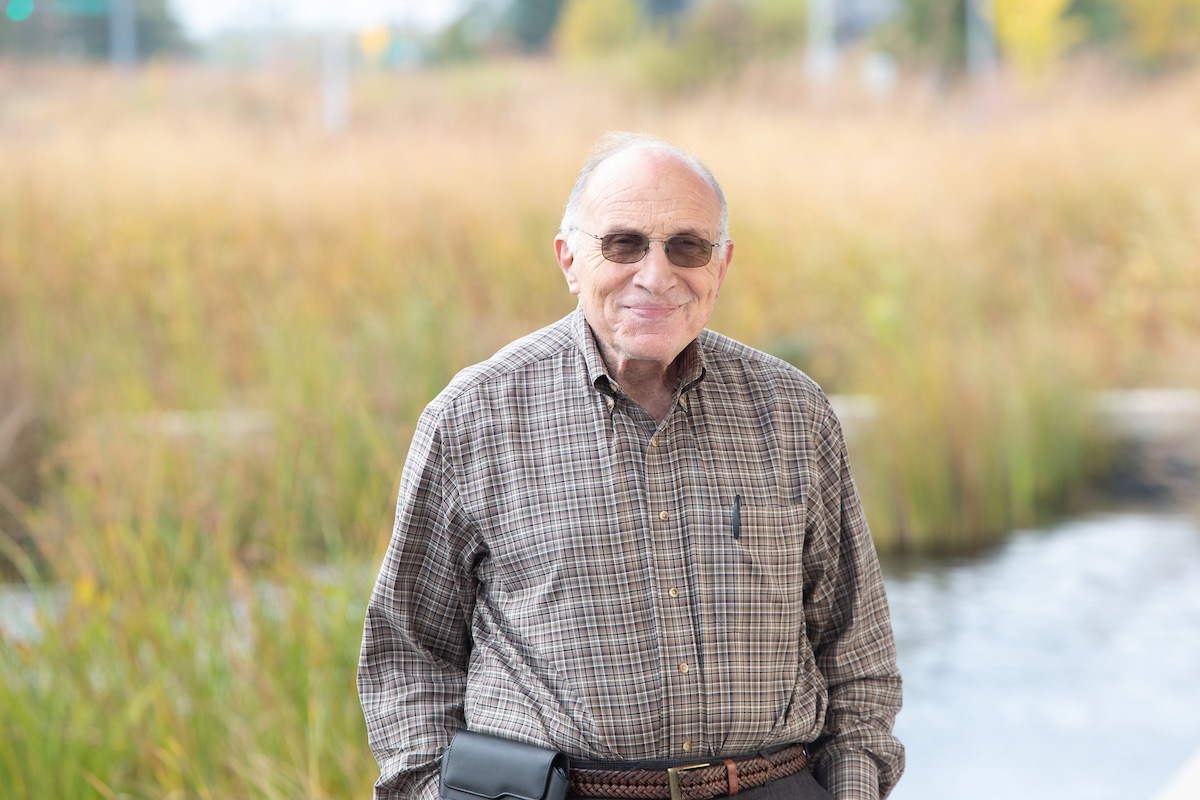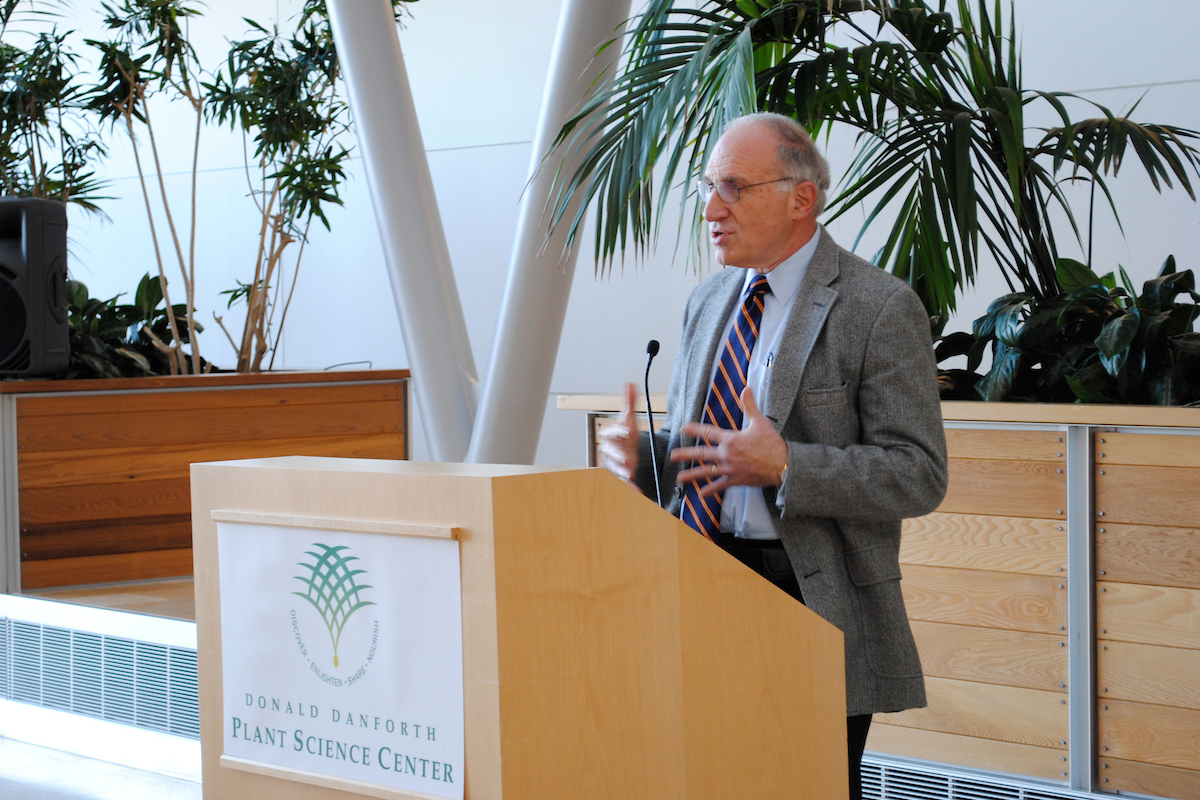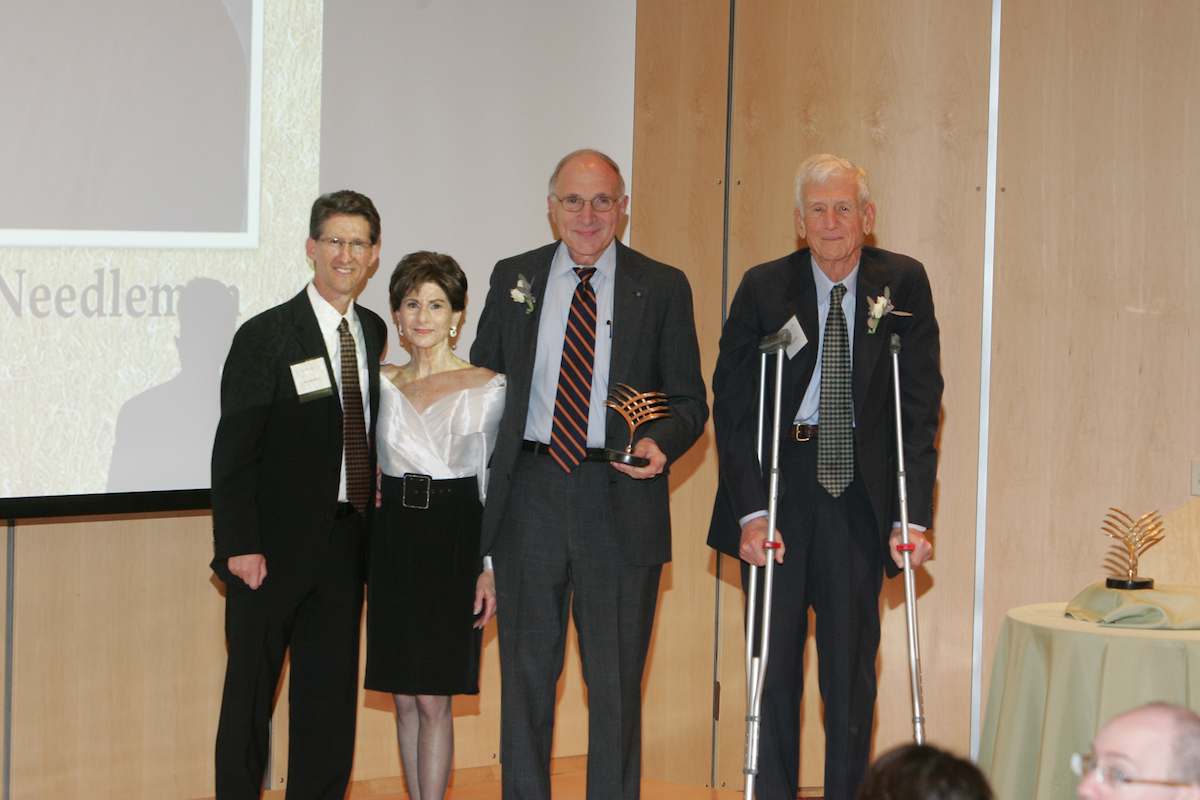A Scientist’s Scientist: Honoring the Legacy of Dr. Phil Needleman, A Biochemist among Plant Scientists
You would never confuse Phil Needleman for a card-carrying plant scientist. Rather, Phil was a rigorous biochemist and pharmacologist who made life-changing discoveries that impacted millions of people. Phil discovered key parts of biochemical pathways that influence blood pressure, blood clotting, and inflammation. He led teams that studied the enzyme COX-2 and COX-2 inhibitors, leading directly to the anti-inflammatory drug, Celebrex, for the treatment of chronic pain associated with arthritis and other conditions. He was highly recognized, awarded, and admired for his vast contributions to science and medicine.
Despite his lack of plant science bona fides, Phil made tremendous contributions to the Danforth Center. In 2005, he was cajoled by his friend Bill Danforth to join our board of directors, where he remained for nearly 19 nears. He was the Center’s interim president for over a year, providing both leadership and stability prior to [my] hiring in 2011... From my perspective, Phil made his most important contributions in three ways.

Long-time board member and former interim president Phil Needleman died on March 25 when a tree fell on him while walking in the woods. He was 85 years old.
First, he was a scientist’s scientist. He cared deeply about the importance of a scientific question, the quality of an experiment, and the clarity of results. Phil believed in data. He wanted to see it, and he wanted to talk about it…a lot! He once had a sign on his door that read, “If you have data, knock then enter. All else requires an appointment.”
Second, Phil constantly encouraged, demanded really, that we apply what we learn to solve big problems in the world, and he supported us in doing so. In part because he was inspired by many of you (Danforth Center community members), Phil became interested in the Nitrogen Problem in agriculture – there’s too much greenhouse gas emission and other environmental impact due to current reliance on synthetic nitrogen fertilizers. He wanted to learn what we were doing about it, but he was even more interested to work with a team to organize new approaches. This was how the Subterranean Influences on Nitrogen and Carbon (SINC) center was conceptualized, and then launched through generous donations from Phil and his wife, Sima.
And third, Phil provided wisdom, mentoring, and personal support to so many of us at the Center and on the board. At this point, I have a confession to make. On a few occasions, I plotted covertly with Phil ahead of a board of directors meeting. Before proposing and seeking approval for new ways in which to create start-up companies, for example, we had this exchange. “Phil, I know you support this, but I need you to help make the case in the meeting,” I said. “Don’t worry," Phil replied with his usual wide grin. "I’ll be ready with fist-pounding support when the time comes." Phil relished opportunities to help me and countless others.
Phil Needleman’s life ended abruptly this week. But his legacy, example, and will to make the world better through science lives on.
Jim Carrington
Danforth Center President and CEO
March 29, 2024

Phil Needleman acting as interim president announcing the hiring of Jim Carrington.
In Phil’s Own Words
From the 2009 Annual Report, after Phil accepted the role of interim president of the Danforth Center:
Favorable winds of change occurred in 2009. The most prominent was the creation of the National Institute of Food and Agriculture (NIFA). Not surprisingly, our founding President Roger Beachy was asked to become the Institute’s first director.
As a member of the Center’s Board of Trustees and a citizen of St. Louis, I agreed to serve as Interim President while we search for a new world-class leader. I’ve spent 50 years as a scientist doing medical research at Washington University School of Medicine, Monsanto, and in the pharmaceutical industry. That research focused on dissecting and understanding how life processes work.

Plantasia 2011. Phil was presented with the Danforth Distinguished Service Award for his role as interim president from 2009 to 2011.
When I came to the Danforth Center, I thought about the fact that the tools with which we attack problems in plant sciences and human disease are the same. I comforted myself with the notion that a plant is really a person that doesn’t move.
For the first four months in my new role, I was in constant tutorials evaluating numerous projects. Pretty quickly I was struck by what it means, “not to move”. Plants sit there and are attacked by bacteria, by fungus, by viruses, by predators, by drought, by cold and more.
Much of the science at the Danforth Center explores the fundamental understanding of the unique characteristics of plants and how they survive. How do we learn from Mother Nature and then how do we enhance her survival tools to create plants that will improve human health and the environment? This research is at the heart of our mission[.]
Phil Needleman, PhD
Interim President
2009-2011
Medical research was a way to improve the human condition too, so the Danforth Center mission—to improve the human condition through plant science—has always meant something to me.
Phil Needleman, PhD
You Can Help
Phil Needleman believed in science to alleviate human suffering and improve lives—and he challenged us to join him. If you would like to help make a difference by supporting the work of the Danforth Center, please visit our donate page.
About
A version of this story originally appeared in the Leaflet, the free newsletter of the Donald Danforth Plant Science Center. Sign up to receive more stories like this straight to your inbox.